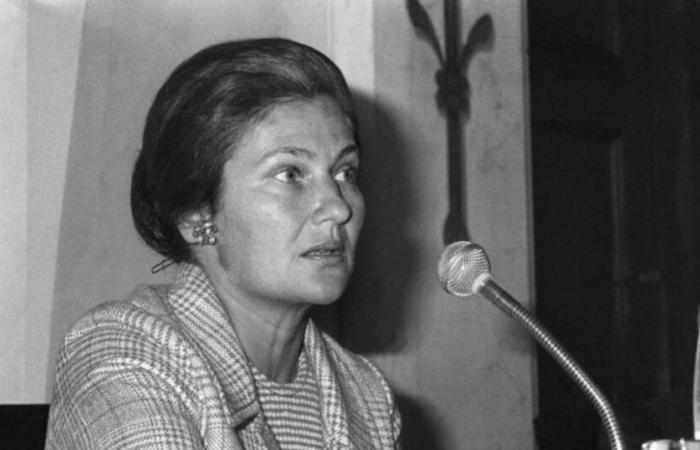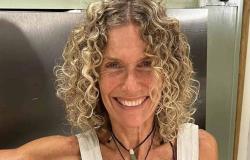Only hope calms the pain, by Simone Veil (Lumen)
On April 13, 1944, the convoy 71 led 1,480 people deported from the Drancy detention field to Auschwitz-Birkenau. Among them were traveling Simone Veil, then 16 years old, her mother and her sister. They travel in cattle cars, overcrowded, along with sick people, children and babies. The train stopped at night, abruptly, the doors opened and were pushed out. Powerful light spotlights illuminate them aggressively. Dog barking is heard. Ordered in rows, they fear for their future, but they still don’t imagine the horrors they will know. “Actually, it is unimaginable,” says Simone Veil (1927-2017) in an extensive interview he gave in May 2006 the foundation for the memory of the Shoa. A valuable and shocking testimony that has been collected in this book. Former minister and First Woman to preside over the European Parliament, Simone Veil tells her life in Nice with her family of Jewish origin; The arrest and 18 months that lived in the extermination field. “The real question is dignity, because in the field that will for humiliation reigned,” he says. It describes the march of death, an 80 kilometers walk through the snow, when the Nazis fled the advance of the red army; The death of his mother, just two months after liberation, and the difficult return to Paris. His father and brother never saw them again, they did not return from the fields; She and her sister had to rebuild their lives in a often indolent postwar atmosphere: “silence, the misunderstanding that they imposed us … it was very hard,” he recalls. Simone Veil studied law, made a brilliant magistrate career, was a minister, promoted the abortion law and was part of the French Academy. “I never wish anyone wrong, but we have no right to forget,” he says in these eloquent and moving pages.

Family business by Álvaro Campos (Tusquets)
Write in the meson of the family business, in a population of Santiago Poniente. While it does, a lady comes to buy milk. “My technique is to divide the brain into two. One part for milk and another for the text I am thinking,” he says. “I remind you that we are not in the Montaigne library but in a world of food that must be supplied,” says Álvaro Campos. Just as some authors wrote from the battlefield, Campos declares: “I am the one who writes among the milks.” Montaigne, Lord Byron and Camus, Carver and Cheever coexist in these pages with the old people of the sports club, mechanics, merchants, drunks, criminals and narcos. “Intuitive and artisanal thinker”, formed in history and philosophy, the author composes a story made of fragments, articulated as a working day, in the morning to night, which is one of the best chronicles about life in the populations, where playing a pichanga and not receiving kicks is impossible (“you must hit back”), where the boys wear faces competitive and hedonistic of the trap ”, and where consumption is in the center. A story that is at the same time a reflection on money, commerce and work. “It causes me pleasure to see an old man from the Fair to pay the bread opening his wallet and showing a twenty thousand bills. I see it with the same fascination with which you had seen the sponsorship armor if I had been born in his time,” he says. Also, a reflection on the trade, often pierced from irony: “Because I am not, I cannot be, the noble Greek citizen who seeks through the words and ideas the political splendor of his city. No! Unfortunately I am also part of the vulgar horde of barbarians who delights in looting and selling all value that he finds in his path. Starting for what should never be sold (the major crime). Singular and energetic voice, fields delivery assertive and stark pages, phrases such as flashes, poverty, wealth and merit. A sharp, lucid and insightful book.

The monsters of Rookhaven, by Pádraig Kenny (FCE)
The magical beings that inhabit Rookhaven’s mansion, monsters from the human perspective, made a pact with the village. A peace and coexistence agreement. An enchantment maintains the distance between both worlds and does not invade with each other. “No one can come here without our permission,” says Mirabelle, the protagonist of this youth novel. But Mirabelle doesn’t know that a couple of humans is on the way. “And humans, as is their custom, have the terrible habit of causing disasters where they go,” says the narrator. Accidentally, JEM and Tom, two orphaned brothers, cross a crack in enchantment and invade the world of monsters. His arrival breaks the balance between them and the inhabitants of the village and creates confusion between the world of monsters. As Mirabelle knows and makes friendship with Jem, both girls face their own fears and prejudices, and discover that they often deceive them. The book has illustrations by Chilean artist Alfredo Cáceres.






